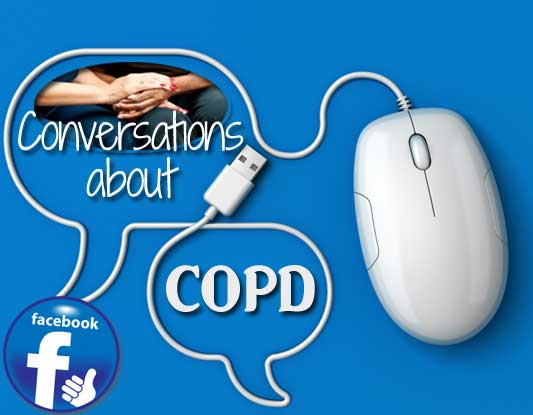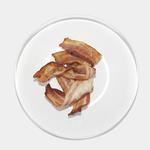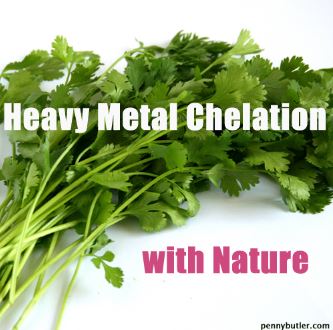Conversations about COPD (Nitrosamines)

Copd has a cause and by removing the cause, the effects will disappear as well.The cause is very simple, the effects are confusing and deceiving. Anyway I will not surrender until this horrific disease will be eradicated, I believe this is the right way, COPD in my honest opinion, is mass murder in the name of profit.
My mother is a copd sufferer since 2005 (a non-smoker). Over time I’ve seen her health deteriorate and I started to seek different ways to treat her copd. I put my mother on a Ketogenic diet (high in fat and low in high glycemic foods), trying to starve the pathogens inside her lungs, with good results. Also, I gave her supplements, probiotics, exercise: everything has been useful and improved her quality of life, but the real shift come when I cut completely cured meat.
This was something new for her as she ate bacon, sausages, ham, smoked meats all her life. Cutting cured meat greatly improved her exacerbations, from 4/5 times per day with her inhaler (steroids) to almost one or none. How was that possible? Smoke and tar are known to damage alveoli, but she never smoked a single cigarette in all her life.. Why did she improve so much after cutting cured meat?
I started to study cured meat ingredients and processes, especially sodium nitrite to find an answer. The interesting point come when I learned that when meat containing nitrites is heated (particularly at high temperatures) and mixed with amines, a compound naturally present in meat, the result is nitrosamines. Nitrosamines is also a component in cigarettes. In fact cigarettes usually carries in its smoke significant doses of carcinogenic tobacco specific nitrosamines (TSNAs), which have been implicated as causes of oral, lung, oesophageal, and pancreatic cancer. I learn at this time, there is no known substitute for nitrite in curing meat and sausage, so foods industries have no choice, but even tobacco industries haven’t almost any option in their process.
From http://archive.tobacco.org/Documents/010821oraltsn.htm the tobacco is processed in a heated closed system that resembles pasteurization of milk, thus eliminating bacteria that could contribute to TSNA formation. Data from Canada24 for a sample of 27 brands tested by the ISO method had a range of NNK between 21–51 ng per cigarette. A summary of these data is presented in table 1, together with the levels of NNK found when the same sample was tested by the “intense” system devised by Health Canada (puff volume of 55 ml at a frequency of 30 seconds with all ventilation holes blocked).25.
IS IT ACCEPTABLE THAT CARCINOGEN DOSE BE VARIED FOR FLAVOUR AND AROMA?
It may appear strange to even pose this question, but it seems that nitrosamine rich tobaccos are valued for this reason. A representative of the China Tobacco Industry made this point in a discussion at the meeting of the Scientific Advisory Committee of the World Health Organization in February 2002.31 Of course the answer to the specific question has to be a resounding no. Carcinogen dose should be as low as practicable and in the case of nitrosamines this is either zero or something very close to it.
source: http://lpi.oregonstate.edu/f-w00/nitrosamine.html
Nitrosamines are carcinogenic in animals. What level of exposure to these carcinogens do humans have? A 1981 report from the National Academy of Sciences (NAS) estimated that the per capita exposure is about 1 microgram per day from foods and beverages, mainly from fried bacon and beer. Current exposure is probably closer to 0.1 microgram per day due to successful efforts over the past 20 years to reduce nitrosamine formation in foods and beverages. In contrast, the NAS report estimated an exposure of 17 micrograms per day from cigarettes smoking, although the use of filters has somewhat lowered smokers’ exposure. Recent reports indicate that industrial exposure, such as found in a rubber or chemical manufacturing plant, can be relatively high.
Where is the link between copd smokers and non smokers? The link above tell us another interesting truth: nitrosamine is found in cigarettes in quantity far more relevant than in foods, that could be the answer because copd is prevalent in smokers than in other people. “So what?”, are you surely saying. In the past tobacco smoke, dusts, chemicals, indoor or outdoor air pollution were pointed as culprits, but they are not, because non smoking people who lived in a healthy environment get the same result. Copd smokers and copd non smokers get the same effect on the alveoli, how is possible? Nitrosamine is the only link between the same effects and different habits and my mother reaction (as all copd sufferers) to cutting cured meat is simple her body reaction to stopping ingest a poison, but this is well know: http://www.foxnews.com/health/2012/03/23/cured-meat-tied-to-more-copd-hospitalizations/ The damage to elastic tissue of the alveoli is the same, they collapse and can no longer absorb oxygen effectively in both cases.
Here come the horses, or better, extruded horse food. Extrusion is a process under which the ingredients are cooked under pressure with high temperature steam for a short period of time, in the process sodium nitrite is add as preservative. This process give as result horse meat have trace of nitrosamine and, guess what: HORSES GET COPD TOO!!! http://www.clydevetgroup.co.uk/equine/newsletters/jan04.htm something with no precedent in the past.
That’s not all, let’s add another piece to the puzzle: a recent report in the American Journal of Epidemiology concludes that dietary vitamin C can help prevent chronic obstructive pulmonary disease (COPD) http://www.medicinalfoodnews.com/vol02/issue8/lung , wonder why? Because Vitamin C inhibit the nitrosamine formation http://ajcn.nutrition.org/content/53/1/247S.full.pdf Not enough?! Let me give you another hint: another natural product known for his copd preventition proprieties, soy: http://www.dietsinreview.com/diet_column/07/study-soy-reduces-risk-of-copd/#ixzz0ti34l2na got a special proprieties (I know, you got it at this point): they inhibited the formation of N-nitrosodimethylamine and N-nitrosodiethylamine from sodium nitrite http://eurekamag.com/research/005/705/inhibition-nitrosamine-structure-soy-products.php . So, at the end, we have nitrosamine linked to copd develop, and product, or food with anti nitrosamine proprieties linked to copd prevention. Is that something new? No
Animal studies suggest a causal effect. In 1968, a rodent model of experimental emphysema was described in which rats exposed to 10–25 ppm of ambient nitrogen dioxide developed emphysematous changes in their lungs (8–10). In 1972, Shuval and Gruener (7) showed that rats fed sodium nitrite in their drinking water developed pulmonary emphysema.
Shuval HI, Gruener N. Epidemiological and toxicological aspects of nitrates and nitrites in the environment. Am J Public Health 1972;62:1045–52.
Cured meats may cause lung tissue damage through the effects of nitrite on connective tissue protein collagen and elastin in the lung. The integrity of elastin and collagen is principally responsible for the maintenance of alveolar air space size. In vitro experimental studies have shown that primary nitrite modification of extracellular matrix proteins produces effects that mimic age-related damage, including elastin fragmentation
All facts above are not a series of coincidences, but a list that link a disease to a well know venom. Forgive me if my analysis and hypothesis are very primitive, I’m not researcher and this isn’t a peer-reviewed paper. I haven’t the presumption to demonstrate anything with this email, but I firmly believe this is the right way: to me all above is a smoking gun! The sad thing is I suspect many in the industry know well this.
I’m contacting as many institutions as possible to investigate, WE NEED A STUDY ON NITROSAMINE AND COPD, we could free the world from such horrific disease, (as you well know COPD is the fourth leading cause of death in the United States). A positive answer could eradicate a terrific disease forever. Hope someone will listen to my hypothesis and, with Creator help, fortune will smile upon us.
I’m Sincerely Yours
CW Feb 7 @ 4.20am
This is not entirely correct “I learn at this time, there is no known substitute for nitrite in curing meat and sausage, so foods industries have no choise” I buy uncured bacon, summer sausage, ham. Sometimes they use celery seed, which I’m ok with. Our food supply is full of horrible crap, buyer beware :) I’m impressed with your research journey…..didn’t mean to only point out the ‘flaw’
IH February 7 at 5:56am
Celery contains nitrate naturally and when eaten is converted to nitrite. You have provided some excellent information for me to look into. Thanks.
PCP February 7 at 11:52pm
MDS, the medical community already knows people with COPD should not eat cured meats. I was told by my doctor to stay away from cured meats quite a while ago, and there are many, many articles written about cured meats and COPD.
ESR February 8 at 3:34pm
.. Excited to read it. Thank you for sharing!
Wow, lots of new information to stick my teeth into, thank you very much for what you have learnt so far.. definitely worth investigating further…. there are some <2yo’s with COPD.. (premature babies).. very interested to see if there is a link here.. maybe something in a particular baby formula or in their mother’s milk (something the mother is eating) that contains this ingredient.. anyway, damn.. lots more to study here, but I love a new challenge.. Im really excited to learn more.
Just spent the past 6 hours researching more into this..and found similar findings as Marco. There are already loads of studies on it, especially in regards to cancer and diabetes type 1, as well as respiratory related studies (would need months to read all the information).
I tried to condense the info that I collated so far, but its really hard to not want to include everything. :)
In a nutshell though…
- Dietary Vitamin C & vitamin E can negate the effects of nitrosamine, so a diet high in these vitamins (especially vitamin C rich plants) is beneficial (& essential for everyone because we are all exposed to nitrates & nitrites universally in our air).
- As well as cleaning up the toxins in our home & workplace environments, eating less fertilized foods, and filtering your drinking water.
- Limiting cured meats, preserved foods, and dairy.
- Avoiding tobacco smoke and breathing less toxic air
- The most surprising.. is that the highest sources come from plants (some high nitrate vegetables are cabbage, carrot, beets, celery, lettuce) …which are especially concentrated in greenhouse-grown plants… I was so confused (& disheartened) by this part of the research findings, that I spent more time on finding out why it was relevant.
So… before you use that as an excuse not to eat your veggies :) .. note that vegetables that are high in vitamin c will negate those effects so not to ‘avoid’ those vegetables just because they are high in nitrate, just to be conscious of their high nitrate content.
There are thousands of lines I could add here to backup all points, my notes are out of control on my computer, I’ll try and collate it all together in a single post, but Marco is on the right track with removing cured meats from his mother’s diet and noticing the beneficial effects, but that the cured meats weren’t the highest sources or the riskiest problem of these nitrates & nitrites. (because they have been aware of it for decades and have already made this more of a lower-risk source by changing their practices & adding vitamin c) (apparently almost universally).. but they haven’t completely resolved the problem so he would have certainly noticed a benefit if she were on a high-intake of cured meats.
I found it very interesting that plants grown in greenhouses have increased nitrate content, but I couldn’t find much ‘discouraging information’ about plants being responsible for any of the negative effects. i.e. even though the highest concentrations were found in plants, the highest ‘damage research’ was actually from our drinking water, the toxins in the air we breathe (smoke from cigarettes, heaters, pollution, etc.), and workplace toxins. Which suggests that the high vitamin content of the plant-based sources of nitrates and nitrites were effective in negating damage caused by nitrosamine.
There was also a study that showed that toothpaste for sensitive teeth (toothpaste with potassium nitrate) could also add to the risks but that it was hard to study how much is absorbed into the body since most people don’t “swallow” the toothpaste, so it might not be high-risk but worthy of knowing in case that is one source that hasn’t been looked at in your household, and it’s a pretty easy thing to remove from your intake. (especially if Marco noticed a difference in removing cured meats which is also apparently low-risk, then removing the toothpaste might actually also benefit some people too)
More research to come once I’ve collated and learnt more.. it’s a very fascinating & eye-opening subject… there are loads of scientific studies to scour.
IH February 10 at 3:16pm
Awesome job! Thanks so much, look forward to reading more
I just found an article (not a research paper, but it was interesting & ‘sourced’ nonetheless).. about one of the earlier comments regarding “uncured” bacon that might be of interest..
I’ll put some of the notes here, but click on the link for the entire article which goes all out into all sorts of different studies and opinions about bacon…
Excerpts below:
The question is, are these “uncured” bacons healthier?
The short answer is no. Dr. Nathan Bryan, University of Texas Houston Biomedical Research Center, pulls no punches when he states: “This notion of ‘nitrite-free’ or ‘organically cured’ meats is a public deception.”6
Traditionally bacon was cured by adding sodium nitrite salts directly to the meat. Today’s manufacturers of “nitrite free” brands add celery salt, which is about 50 percent nitrate, plus a starter culture of bacteria. This transforms the nitrate found naturally in the celery salt into nitrite, which cures the meat. Although manufacturers label this bacon “nitrite free,” this method actually generates more nitrite from the celery salt than would ever be added as a salt. Indeed, “nitrite free” bacon can have twice the nitrite content of bacons cured directly with nitrite salts. “Some convert 40 percent, some convert 90 percent, so the consistency of the residual nitrite is highly variable,” he says.
Dr. Bryan’s biggest concern is not nitrite content but the possibility of bacterial contamination. “I think it is probably less healthy than regular cured meats because of the bacteria load and the unknown efficacy of conversion by the bacteria.”7 And plenty of studies back him up on the value of nitrates and nitrite for food safety.. Indeed, nitrite can convert to desirable nitric oxide in the body. 8-13
Related articles across the web

Site Notifications/Chat:
- Telegram Post Updates @JourneyToABetterLife (channel)
- Telegram Chatroom @JourneyBetterLifeCHAT (say hi / share info)
- Gettr Post Updates @chesaus (like fakebook)
Videos:






